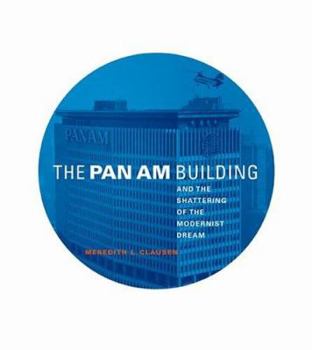The Pan Am Building and the Shattering of the Modernist Dream
Select Format
Select Condition 
Book Overview
The Pan Am Building and the reaction to it signaled the end of an era. Begun when themodernist aesthetic and the architectural star system ruled architectural theory and practice, thecompleted building became a symbol of modernism's fall from grace. In The Pan Am Building and theShattering of the Modernist Dream, Meredith Clausen tells the story as both history and cautionarytale -- a case study of how not to plan and execute a large-scale urban project that seemsespecially relevant in light of the World Trade Center and the ongoing discussions over what shouldbe built in its place.The Pan Am Building was despised by many as soon as the plans were announcedin 1958. The star power of the celebrity architects -- those deans of modernism, Walter Gropius andPietro Belluschi -- overrode critics' objections. When construction was completed in 1963, it becamemore than an architectural question; this "mute, massive, overscaled octagonal slab," as Clausendescribes it, built over Grand Central Terminal, blocked the view down Park Avenue, created deepshadows where there had been sunlight, and poured 25,000 office workers on the sidewalks eachmorning and evening. As Clausen tells it, the story of the building -- which was undistinguishedarchitecturally but important because of its location and its moment in history -- encompasses theend of modernism's social idealism, the decline of Gropius's and Belluschi's reputations, thevictory of private interests over public good, the revival of architectural criticism in the press(both Ada Louise Huxtable and Jane Jacobs emerged as prominent and influential critics), the birthof the historic preservation movement, and the changing culture and politics of New YorkCity.
Format:Hardcover
Language:English
ISBN:0262033240
ISBN13:9780262033244
Release Date:January 2004
Publisher:MIT Press (MA)
Length:477 Pages
Weight:3.50 lbs.
Dimensions:1.4" x 8.3" x 9.3"
Age Range:22 years and up
Grade Range:Postsecondary and higher
Customer Reviews
0 rating





